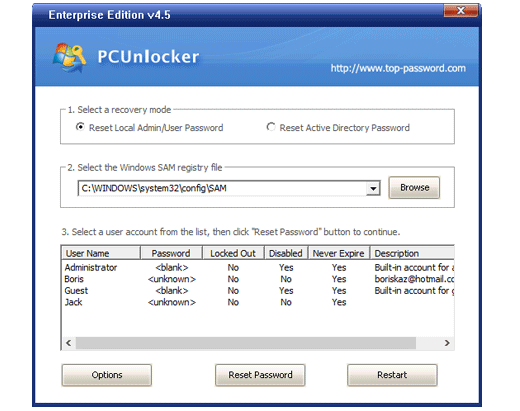
The SAM database runs automatically as a background process when the computer starts up. Simply put, be it a domain-joined computer or a standalone computer, local logon can occur only through the SAM. This is because the DSRM administrator password is stored locally in the SAM and not in AD. The only instance it will use the SAM would be to boot into DSRM for performing maintenance operations. A Windows server that has been promoted to a DC will use the AD database instead of the SAM to store data. However, when a user logs on to a computer as a local user, the user will not be able to access the network resources. In a domain-joined computer, there can be two types of logons: a local logon (that is handled by the SAM as described above) and a domain user logon using the Active Directory (AD) database with the WinLogon service. A user’s logon attempt is successful only when the entered password matches the password stored in the local SAM. The Local Security Authority (LSA) validates a user’s logon attempt by verifying their credentials against the data stored in the SAM. The hashing of passwords offers some security measures and minimizes an attack’s risks. The passwords associated with each of these accounts are hashed and stored in the SAM. In a workgroup, each computer has its own SAM which contains information about all its local users and group accounts. The SAM also works together with other processes and services that run It is known that Windows computers can be configured to be in a workgroup or joined to a domain.

It is available on Windows XP, Vista, 7, 8.1, 10, and 11. The SAM database resides in the Windows registry.

On a Domain Controller, simply stores the administrator account from the time it was a server, which serves as the Directory Services Restore Mode (DSRM) recovery account. Windows stores and manages the local user and group accounts in a database file called Security Account Manager (SAM).

Have you ever wondered where your passwords are stored when you set up any new user account, create a new password, or update your existing passwords? All the passwords of the Windows operating system are stored in a Security Account Manager (SAM) file in the SAM database. When you log in to your Windows Operating System, you must enter a password to gain access to the system. What is the Security Account Manager (SAM)?


 0 kommentar(er)
0 kommentar(er)
